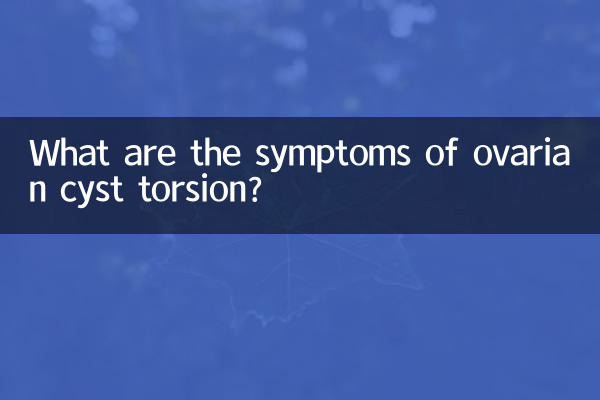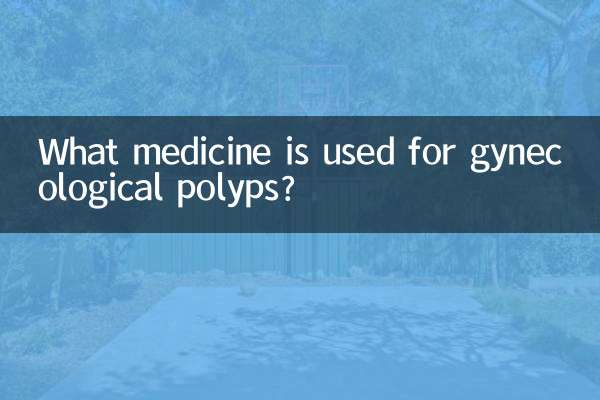What are the symptoms of ovarian cyst torsion?
Ovarian cyst torsion is one of the gynecological emergencies. It refers to the rotation of the pedicle (including blood vessels, ligaments, etc.) of the ovarian cyst due to changes in body position or other reasons, causing blood flow to be blocked. If not treated in time, it may cause ovarian tissue necrosis and even be life-threatening. Below is a detailed analysis of the symptoms, diagnosis, and treatment of ovarian cyst torsion.
1. Common symptoms of ovarian cyst torsion

Symptoms of ovarian cyst torsion are usually sudden and severe. The following are typical symptoms:
| symptom | describe |
|---|---|
| severe pain in lower abdomen | Mostly unilateral, sudden pain, which may be accompanied by nausea and vomiting. |
| Nausea and vomiting | Reflex symptoms caused by painful stimulation or obstruction of blood flow. |
| Abdominal tenderness | The pain worsens when pressing the lower abdomen on the affected side. |
| fever | If the torsion takes a long time, secondary infection may lead to low fever. |
| vaginal bleeding | A small number of patients may experience irregular vaginal bleeding. |
2. High-risk groups for ovarian cyst torsion
The following people are more likely to develop ovarian cyst torsion:
| high risk groups | reason |
|---|---|
| Young women (20-40 years old) | The ovaries are highly mobile and the cysts are prone to twisting. |
| Large cyst (>5cm) | The greater the size and weight, the greater the risk of torsion. |
| People who exercise strenuously or have sudden changes in posture | Exercises such as gymnastics and yoga may induce torsion. |
3. Diagnosis and treatment
Ovarian cyst torsion needs to be diagnosed through medical examination. Common methods include:
| Check method | effect |
|---|---|
| Ultrasound examination | Observe the cyst shape and whether the blood flow signal is interrupted. |
| CT or MRI | Further clarify the degree of torsion and surrounding tissue conditions. |
| blood test | Test for indicators of infection (such as elevated white blood cells). |
Treatment principles:
1.emergency surgery: Relieve torsion through laparoscopy or laparotomy and preserve ovarian function as much as possible.
2.cyst removal: If the ovarian tissue is necrotic, the affected ovary needs to be removed.
3.Postoperative care: Prevent infection and check regularly.
4. How to prevent ovarian cyst torsion?
1. Regular gynecological examinations, especially those with a history of cysts.
2. Avoid strenuous exercise or sudden changes in body position.
3. Seek medical attention promptly if you find that the cyst is enlarging or causing pain.
Summarize:Ovarian cyst torsion has a sudden onset and typically presents with severe unilateral lower abdominal pain accompanied by nausea and vomiting. Early diagnosis and surgical intervention are key, as delayed treatment may lead to ovarian necrosis. Women should be more vigilant, especially those with cysts or high-risk factors, and need regular follow-up observations.

check the details

check the details